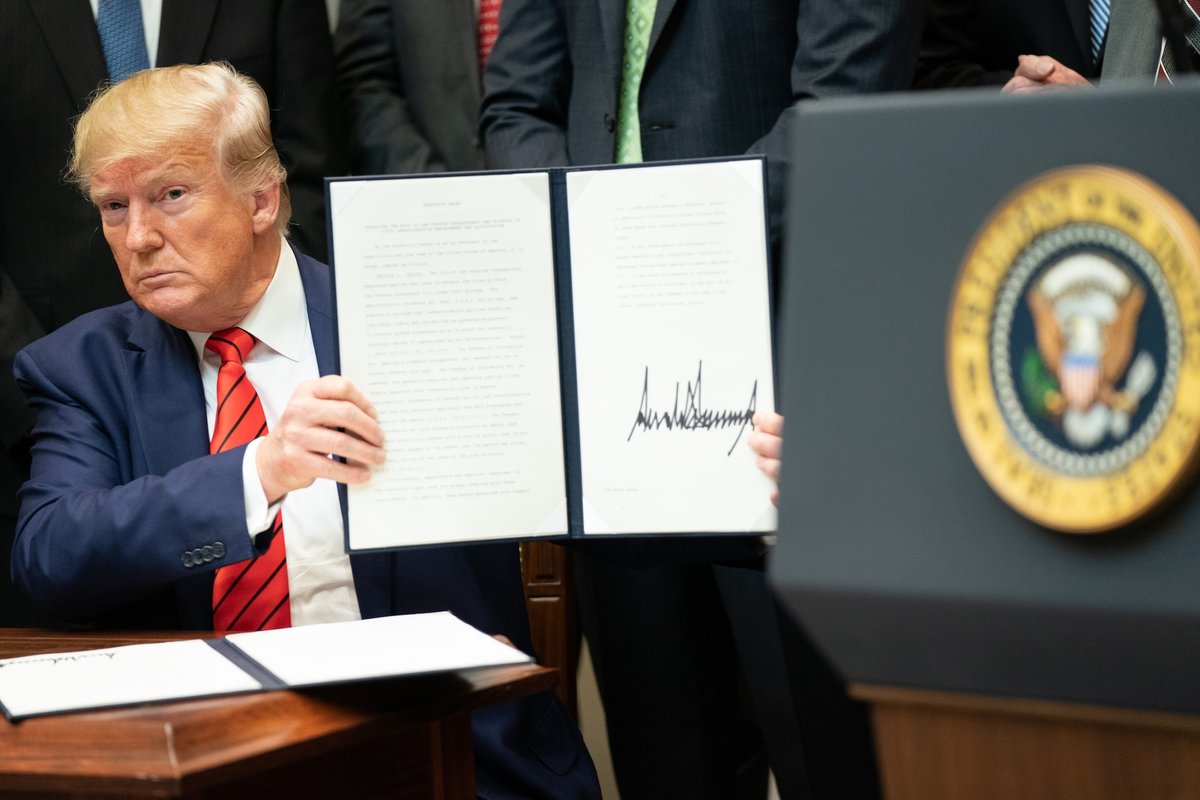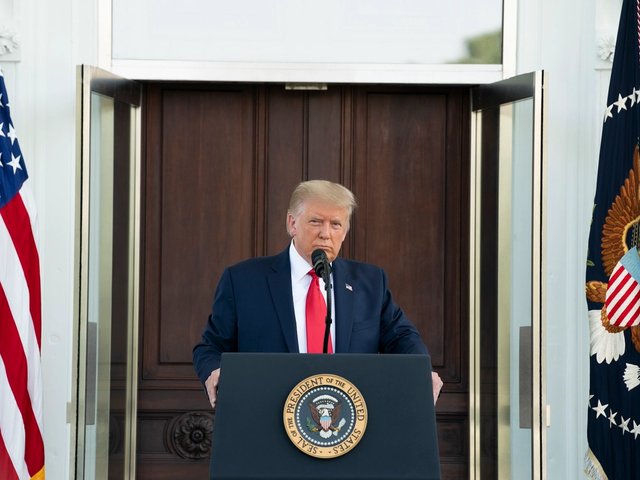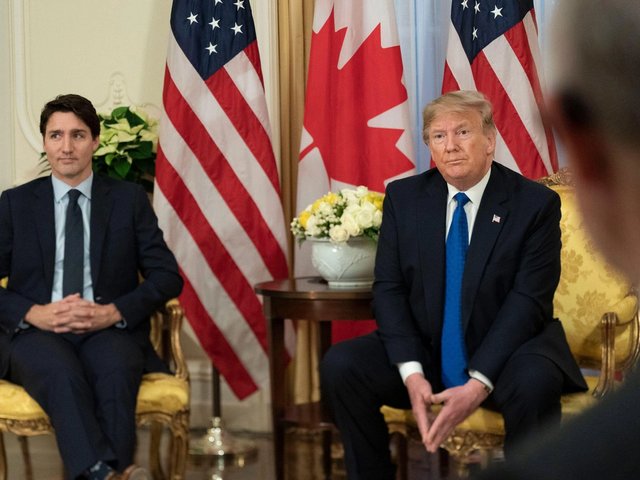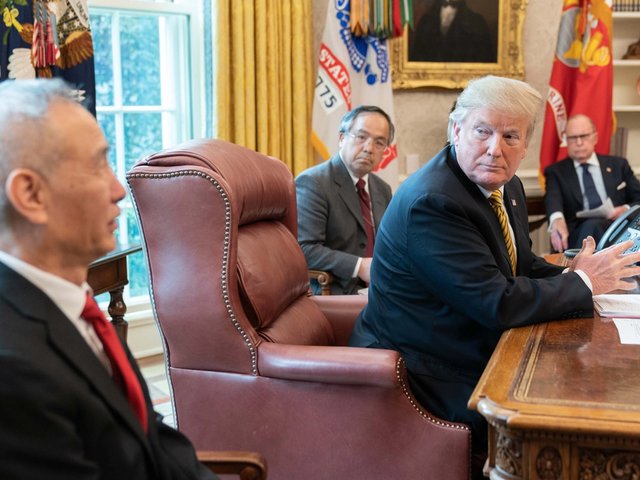US President Donald Trump’s proposed tariff regime for around 60 countries—currently in limbo while courts consider the measures’ legality and the administration seeks bespoke agreements with individual trading partners—have caused uncertainty in the art and antiques markets. Is art exempt from the tariffs? What about antiques and decorative art objects? Will dealers in all three categories be willing to attend fairs in the US if they may have to pay duties on objects brought into the country for such events? Just as important to these dealers: will buyers be willing to pay more for objects to cover the cost of import duties?
As with all the other questions related to Trump’s policies’ possible impacts on the art trade, there is no clear answer. Margo Thoma, the director of Tai Modern, a gallery in Santa Fe, New Mexico that specialises in contemporary American and Japanese bamboo art, said that these tariffs, if applied to art, “would certainly make business more difficult”.
She added that she recently accompanied a group of collectors on a trip to Japan where they visited artists’ studios. “During one of the studio visits, we sold four baskets to four different clients. The works were priced at ¥400,000 ($2,800), ¥2.6m ($18,200), ¥3m ($21,000) and ¥2.6m. If the prices had been 10% higher, I think the sales would still have happened. If they were 24% higher, I believe the two ¥2.6m sales would not have happened.” (On 2 April, Trump proposed a 24% tariff on goods from Japan.)
Masterpiece market soldiers on despite trade war
Others in the trade are less worried about sticker shock for the most high-end objects. Steven J. Chait, the president of the New York City-based Ralph M. Chait Galleries, which specialises in ancient to more modern Chinese porcelain and art, says the announced tariffs on Chinese goods—previously ranging from 145% to 245%, more recently lowered to 30%, although liable to change again before long—“will potentially drive down prices we pay to people overseas wishing to sell to us”. He adds that “if we had to ‘pass on’ the import duties, the importance of an object and a ‘once in a generation or lifetime’ opportunity to purchase it would likely mitigate having to pay more for it than before the tariffs. But, the more beautiful but less extraordinary objects sourced from overseas would be harder to do this with, and we would likely avoid purchasing them from overseas at this time under these circumstances.”
In effect, the wealthier “might hold their noses and pay”, Chait says, while the “middle market might balk at higher prices”. The collectors who make up the middle market differ for different categories of luxury items and collectibles. The Manhattan art adviser Todd Levin categorises these buyers as spending in the low six-figures and under. He speculates that “newer, younger collectors might be more affected by the tariffs” than those spending at the higher end. He adds: “At the top level, the tariffs won’t matter so much.”
He also suggests that dealers will try to absorb some of the higher costs, which may be difficult for some of them “who don’t have a lot of excess capital”.
“If people don’t really know how much money they have from one day to the next,” says Eric Zetterquist, a New York City dealer of Asian ceramics, dealers and their clients may end up competing for objects at auction, or pause transactions entirely—the result of the devaluation of the US dollar and concerns about a recession. “They are less likely to spend it on art, Chinese or otherwise.” He adds that he usually makes a buying to Asia in the spring, but “it has been cancelled this year”.
Most collectors have the luxury of time and can hold off on making sales or purchases until markets settle down. “I do not have or offer anything anyone needs today, or any time,” says Millicent Ford Creech, a dealer of American and British antiques in Memphis, Tennessee, adding that her US clients for items in the four- to five-figure price range are not buying. “The antiques collector in this particular range is generally conservative in his lifestyle and, above all, dislikes uncertainty. They will just wait.”
Falling back on freeports as a safe harbour?
Some collectors of art, antiques and decorative items may both buy and wait, purchasing objects then sending them to freeports or foreign trade zones to avoid or defer tariffs, “waiting a few years to see which way the wind blows”, Levin says. Both Kinsey Robb, the executive director of the Art Dealers Association of America (ADAA), and the Boston-based lawyer Nicholas O’Donnell concurred. O’Donnell says he has “certainly heard of collectors avoiding import that is not strictly necessary until there is more clarity”. He adds: “Storage in a freeport is, in theory, merely a tax deferral (unless the work stays there forever, eventually it would enter a jurisdiction where duties or other taxes are due), but where the tax structure itself is unstable for the foreseeable future, it has the potential to offer some predictability.”
That may work better for some people than others. “I doubt that many people are going to park high-end furniture in a duty-free warehouse to wait out a tariff,” says Clinton Howell, an antiques dealer in New York. “They would either defer or pay the tariff. Furniture needs looking after.”
To buy and bring it home with you, or to buy and lock it up somewhere—those are the options many collectors are weighing. “Some collectors are actively exploring alternative jurisdictions for storage,” says Edouard Gouin, the chief executive officer and co-founder of the art shipping company Convelio. “The names are essentially always the same: Geneva, Luxembourg and Singapore freeports, or bonded warehouses in the UK.” He adds that “these remain isolated cases”.
The New York-based art adviser Megan Fox Kelly, whose clients tend to be in the high-end category of collecting, says that not a lot has changed for these buyers. “The only conversations I’m having with clients right now are about whether they want a particular work of art, whether it is the right fit for their collection or overall collection plan, and if so, what is the right amount to pay ‘all-in’.” If they want something enough, she adds, the price—with or without tariffs—is not an obstacle.







